Open Thread on the Better Market Street Plan
4:57 PM PDT on August 4, 2017
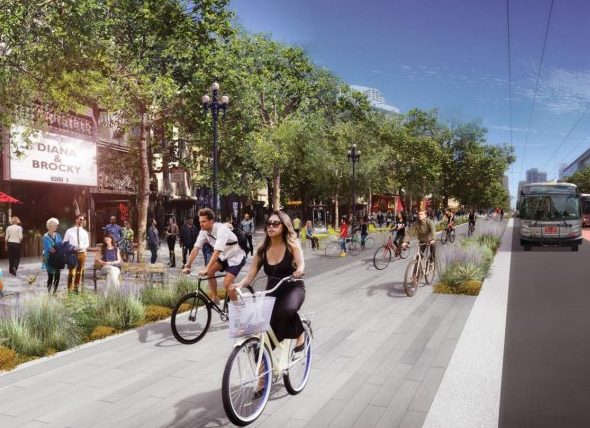
A County Transportation Authority rendering of what Market Street was supposed to look like before the program was scrapped.
The mainstream media was all over it: private cars to be banned from Market Street under the city's "Better Market Street" plan. It will also have sidewalk-level protected bike lanes. For advocates in the safe streets community the design announced by the city this week is a major victory and a reason to celebrate.
From a blog post by Janice Li of the San Francisco Bicycle Coalition:
By the end of 2018, the City seeks to begin construction on a visionary new design for Market Street. No longer will Market Street feel like a race during commute hours, as people jockey for position at every intersection, squeezing between Muni and swarming vehicles left and right. A brand new design — proposed jointly by SF Public Works, the San Francisco Municipal Transportation Agency (SFMTA) and SF Planning Department — offers a win-win situation for everyone. This design would elevate the bike lane to sidewalk level and fully separate people biking and walking from the bustling transit on Market Street, between Octavia Boulevard and the Embarcadero.
Details are available on the Better Market Street website, about a plan that has been evolving for many years.
Streetsblog wants to hear from readers about the plan. But first, a few things to think about.
Intersections
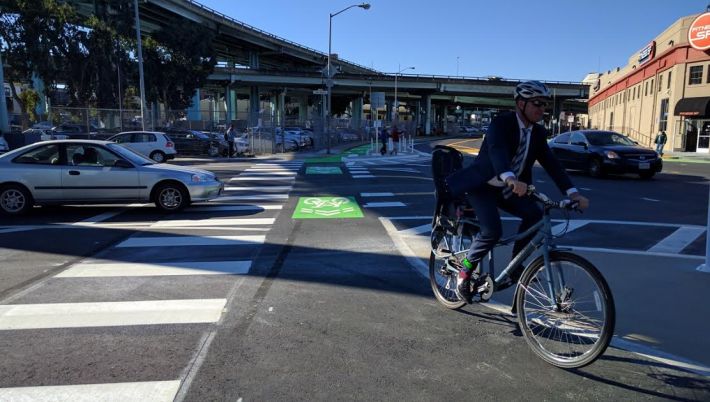
Protected bike lanes are great. But what will really make the street safe--as in safe enough for children and the elderly to bike on it--will be determined by the intersection treatments. If cyclists are simply spilled back down into cross traffic at every intersection it won't be enough. The plan calls for bicycle signals for the length of it...but it's unclear that there will be the kind of robust protection through the intersection that one would find in a Dutch city. Streetsblog hopes the city will phone up the Dutch consulate and copy proven, off-the-shelf designs for the intersections.
Why are we allowing cabs?
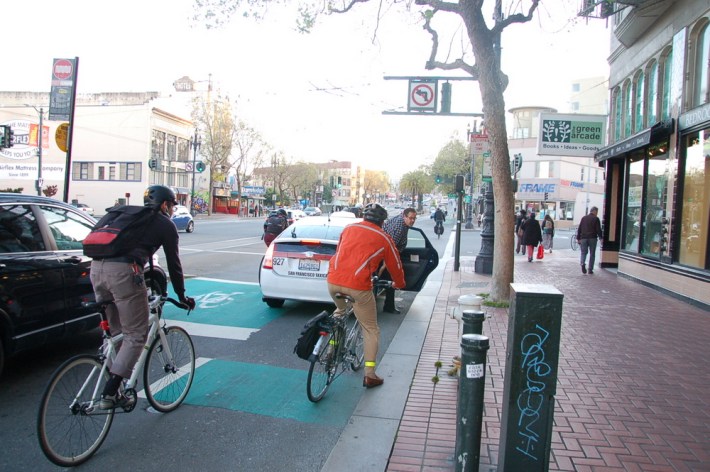
Far be it for this publication to defend ride shares...but if we're going to ban cars, why not ban cars? Parsing traditional cabs from Uber and Lyft seems problematic. (Perhaps I'm biased, since the one time I had a collision with a car was with a New York City taxi--the traditional type). Perhaps a better solution would be to allow paratransit only?
Which leads to the Enforcement Question...
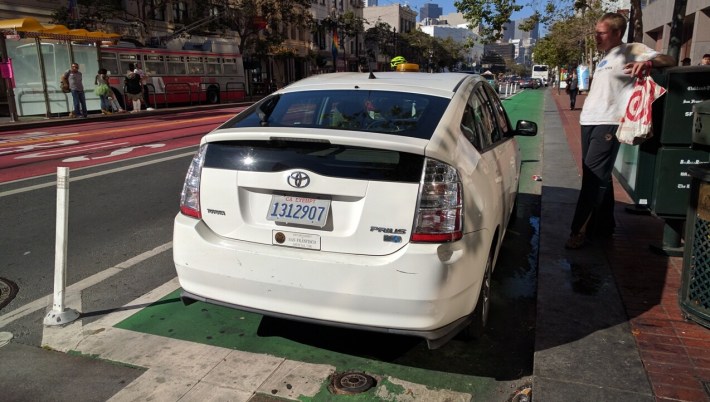
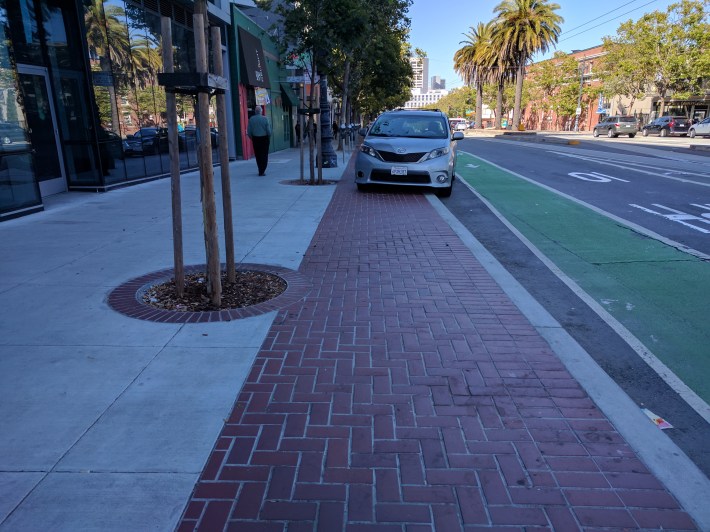
In Streetsblog's view, the plan should include enforcement by design--meaning there must be permeable barriers keeping cars off the bike lanes. It's not enough just to make it the rule--we need concrete blocks, fences, posts, planters and well-positioned trees. Even elevating the bike lanes to sidewalk level is no guarantee cars won't park on it, leaving us with many of the same conflicts on Market Street that we have now.
Then Get Ready for the Watering Down
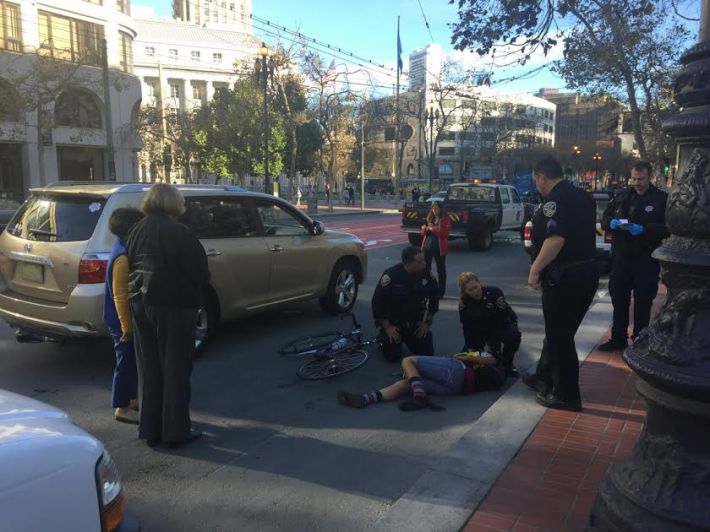
There are already turning restrictions at many of Market Street's intersections. But there are exceptions for trucks and city vehicles. The result has, on occasion, been deadly. If this plan is allowed to be watered down in the name of political compromise, it's not going to work. Advocates, no doubt, will have their hands full holding the line.
All of that said, the Market Street plan is pretty darned exciting and bold for the Bay Area--reminiscent of when New York closed Times Square to through traffic. It will be a huge turning point.
What do you think? Let us know below.
Read More:
Stay in touch
Sign up for our free newsletter
More from Streetsblog San Francisco
Commentary: Making Valencia Better for Business
Curbside protected bike lanes with curbside parklets deliver on much-needed economic benefits for merchants while ensuring safety for all




